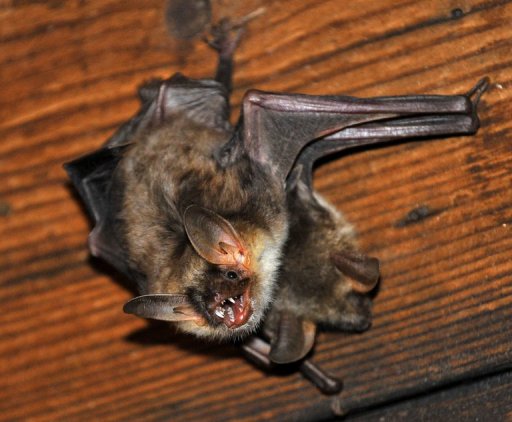
Hi my name is Brendan Mangnitz and I am the owner of 24/7 Wildlife Control. I have been in business now on my own for nearly five years and I have been in this industry for close to 10 years working with friends, family and other companies while learning, training and understanding the wildlife removal & nuisance animal control industry. I started off by graduating from the University of South Florida with my Business Management degree. After this degree I got into the field of wildlife control because I knew there was a big issue with bats getting into people's residences and I realized that there are not many professional bat removal companies. I wanted to be one of the most professional bat removal companies and bat trapping companies out there. You want to hire professional and honest bat removal and bat trapper that is properly licensed, insured, bonded, has workers comp, but additionally you want to hire bat removal companies and bat trappers that show up in uniforms, have wonderful customer service, have clean trucks and respect both of you and the animals like the bats being trapped. We treat our animals in a humane way.

Many bats depend on cavern roosts and are often seen in populations that can number in the high thousands! Cave travellers, spelunkers, plusieurs, and others whose actions take them into or around caverns should exercise caution when in these surroundings./p>
Make sure when you are around bats, (which often roost or hang out, literally) at high points in caverns; it is equally essential to avoid being near or touching bat guano. When possible, prevent coming into caverns that are known to contain populations or colonies of bats./p>
Overall, it might be smart to bring a flashlight into the cavern to help better identify the existence of bats or other animals. If bats are found in the immediate area, consider avoiding the cavern or moving to a region of the cavern where there are no bats./p>
Some bats also roost in shrubs or leaves, and might be recognized in places where outside activities occur, such as climbing or camping. While there have been cases of people coming across massive amounts of bats, most bats in a natural setting are not massive and, in many outdoor circumstances, the existence or sighting of bats is typical and normal.

However, safety measures can be taken at outdoor areas to help prevent visibility to bats and their guano:
When possible, prevent bats from coming into outside living areas and other occupied areas. Consider "bat-proofing" your liveable space. This is called a bat exclusion and it is one of the best control and prevention methods you can make to prevent bats from coming into your attic./p>
Teach children to never handle remains of deceased bats, as well as any different wild or household animals (even if they appear friendly). Tell them to report any contact or exposure with uncommon animals to an adult right away./p>
In some situations, materials have been contaminated with bat guano and may have to be discarded or decontaminated. In these circumstances, regional assuring agents can offer more information on the requirements for the removal, transport, and convenience of contaminated content. Clean-up of areas that have been contaminated with bat excrement should not be handled by non-trained employees, and proper personal safety gear (PPE), such as respirator, cover up, dress, and safety gloves, should be used by anyone managing the possibly contagious bacteria. Always consult your local bat removal specialist!

Vast areas of the world’s jungles are eliminated yearly for signing, farming, ranching and other uses. And fruit-eating bats are key players in repairing those important jungles. Bats are so effective at spreading plant seeds into ravaged forestlands that they’ve been known as the “farmers of the tropics.”
Regenerating clear-cut jungles is a complicated organic procedure, one that requires seed-scattering by wild birds, primates and other creatures as well as bats. But wild birds are careful of traversing huge, open areas when traveling so they aren’t attacked, so they generally drop plant seeds directly below their perches. Night-foraging veggie and fruit bats, on the other hand, often protect huge ranges each evening, and they are quite willing to cobine clearings and generally defecate in flight, spreading far more plant seeds than wild birds across eliminated areas.
Many of the bat-dispersed plant seeds are from sturdy innovator vegetation, the first to develop in the hot, dry conditions of clearings. As this vegetation develops, they deliver the protection that lets other, more sensitive vegetation take control. Seeds dropped by bats can account for up to 95 percent of the first new growth. The innovator vegetation also offers protection and perches for wild birds and primates, so they can add more, different plant seeds to the mix that can lead eventually to a restored woodland area. Bats have been known for spreading the plant seeds of grape, schedules, figs, and cashews - among many others.
If you think you are having an issue with bats in your home and want to get an expert opinion on the sounds you are hearing, give me a call! My name is Brendan Mangnitz with 24/7 Wildlife Control and I am always available to help identify the sounds you hear, and I would be happy to send one of our technicians out to assist you.